Blue Eye Samurai
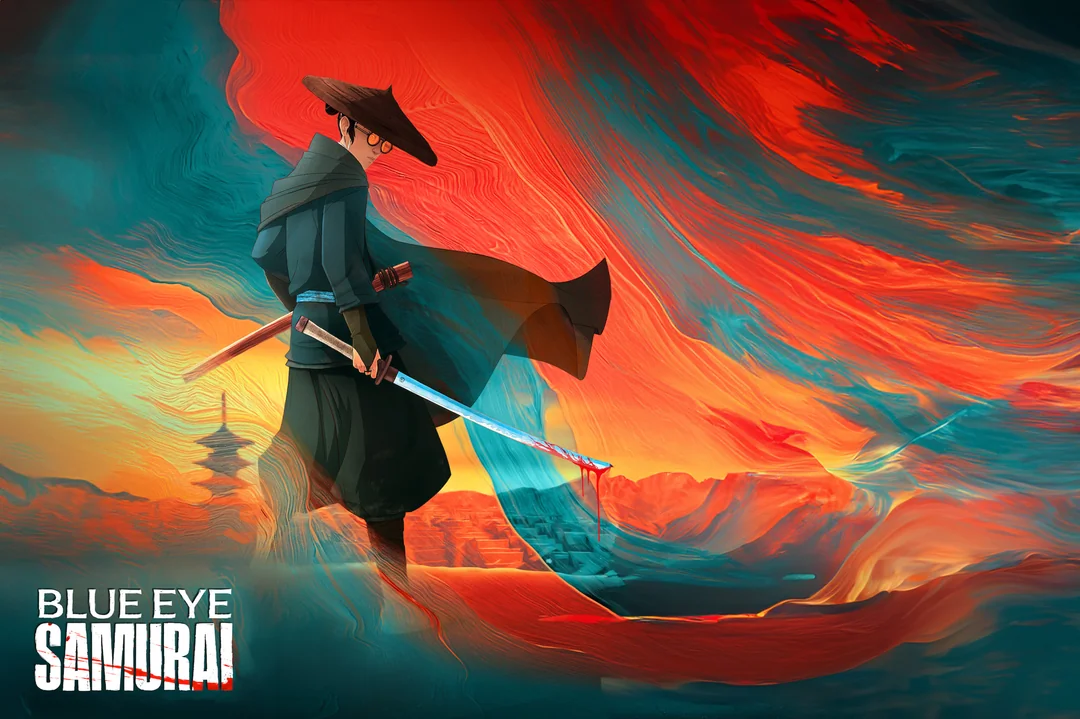
I first glimpsed Blue Eye Samurai over the shoulder of someone on a plane. I had never heard of the show and only caught a glimpse of the first episode but was immediately attracted to its animation and artstyle. After my plane landed I scoured the internet looking for the show until I found it and watched the entire show.
Blue Eye Samurai's story takes place in 15th century Japan during the Edo period and follows the life of Mizu, a vengeful ronin of mixed descent, as she plots to kill four white men hiding in Japan. Along the way, she finds clues as to their whereabouts and makes unlikely friends. Blue Eye Samurai is a story of trauma, oppression, and vengeance. It is a horrifically crude bloodbath of a show... and I loved watching it. Here is my review of Blue Eye Samurai[1].
Story ¶
What makes a great story? To me, a great story comprises of two essential parts:
- Dynamic, "true" characters, and
- Interweaving, progressing, "real" plots.
Let us analyze both of these criterion for a great story in relation to Blue Eye Samurai.
First, a great story has dynamic characters. dynamic characters are characters that grow and change throughout a story. An example of this is the protagonist Mizu who starts as a ronin monster and becomes more of a dignified samurai with friends and morals. She unpacks her past trauma and learns from the friends she makes along the way.
Mizu: "I never said I was a samurai. You did. I am on the path of revenge. There's no place on it for love or friendship or weakness."
(some time later)
Mizu: "...nothing is born, nothing broken... there are some things I cannot do alone."
In the same way, Princess Akemi enters the story weak and scared, yet grows to become a powerful leader.
Good characters must also act true to their beliefs. Mizu is a great example a well-written character because she always acts according to her nature, making you simultaneously love her and hate her. It's hard to not root for her when she takes on all of the thousand claws. You can't help but hate her for leaving Ringo and Akemi to enact her revenge[2]. The same applies to Taigen who acts according to his own moral compass. He lets his prejudice and anger towards Mizu to get the better of him many times before he changes his perspective in later episodes.
A great story must also have interweaving, progressing, "real" plots. A one-dimensional story contains a single plot with a clear beginning and a clear ending. It's predictable and boring. When you introduce multiple plots that interweave together, there are more stakes involved and more moving parts that make a cohesive story. The plots must interact with each other, or the story becomes fragmented and disjointed. In Blue Eye Samurai we are provided different plots that all tie back to Mizu's end goal of destroying the four white men. We are taken through Princess Akemi's rise to succession, Fowler's plan to subjugate the Shogunate, and Madame Kaji's revenge. All of these plots progress the main plot to take Mizu closer to her goal. At the end of every episode, she learns more about Fowler and gains more clues on his whereabouts and how to reach him.
A great story must also be "real". It must be believable and conceivable. Most of the story feels real. The history is truthful: a Japanese blockade did happen and the great fire of Edo did happen. In the same light, the characters themselves are believable. Mizu never feels like an invincible protagonist with no weakness[3]. Fowler never feels like an unreachable and invincible enemy. Both of them can be physically wounded and both of them suffer realistic losses. The stakes always feel dire, never exaggerated.
All of these details make Blue Eye Samurai a great story to tell.
Atmosphere and Tone ¶
A great story alone isn't enough - it needs to have immersion. Atmosphere and tone can make or break a story. Fortunately, Blue Eye Samurai delivers on atmosphere. The show always uses dark, desolate environments with Mizu to represent her darkness, anger, and loneliness throughout the journey. On the other hand, Princess Akemi is always accompanied by bright, vibrant colors to signify her social status and innocence.


The overall tone of the show is purposefully crude. There is an abundance of nudity, gore, rape, and abuse throughout the show to reflect the crudeness of the time period and the darkness of Mizu's mission. It intentionally showcases the oppression and belittling of women and minorities during that time period.
Music ¶
The soundtrack uses authentic Japanese instruments to weave together a beautiful mix of Eastern and Western sounds, reflecting the protagonist and their mixed racial background[4].
I also think the Japanese rendition of For Whom the Bell Tolls by Metallica is awesome.
Art and Animation ¶
I wasn't a huge fan of the animation or artstyle in the beginning but it grew on me as I watched. The animation uses strokes and blocks to paint scenes as if each frame was hand-painted. It intentionally looks this way to fit the Edo period theme, where brush painting represents the art and writing of the time. Brush strokes also reflect a flowing of emotion. It looks very similar to Gwen Stacey's universe in Spider-Man: Across the Spider-Verse (2023) in which Gwen's own anger and sadness is reflected in the depiction of her universe. It's amazing how much emotion can be translated into animation.
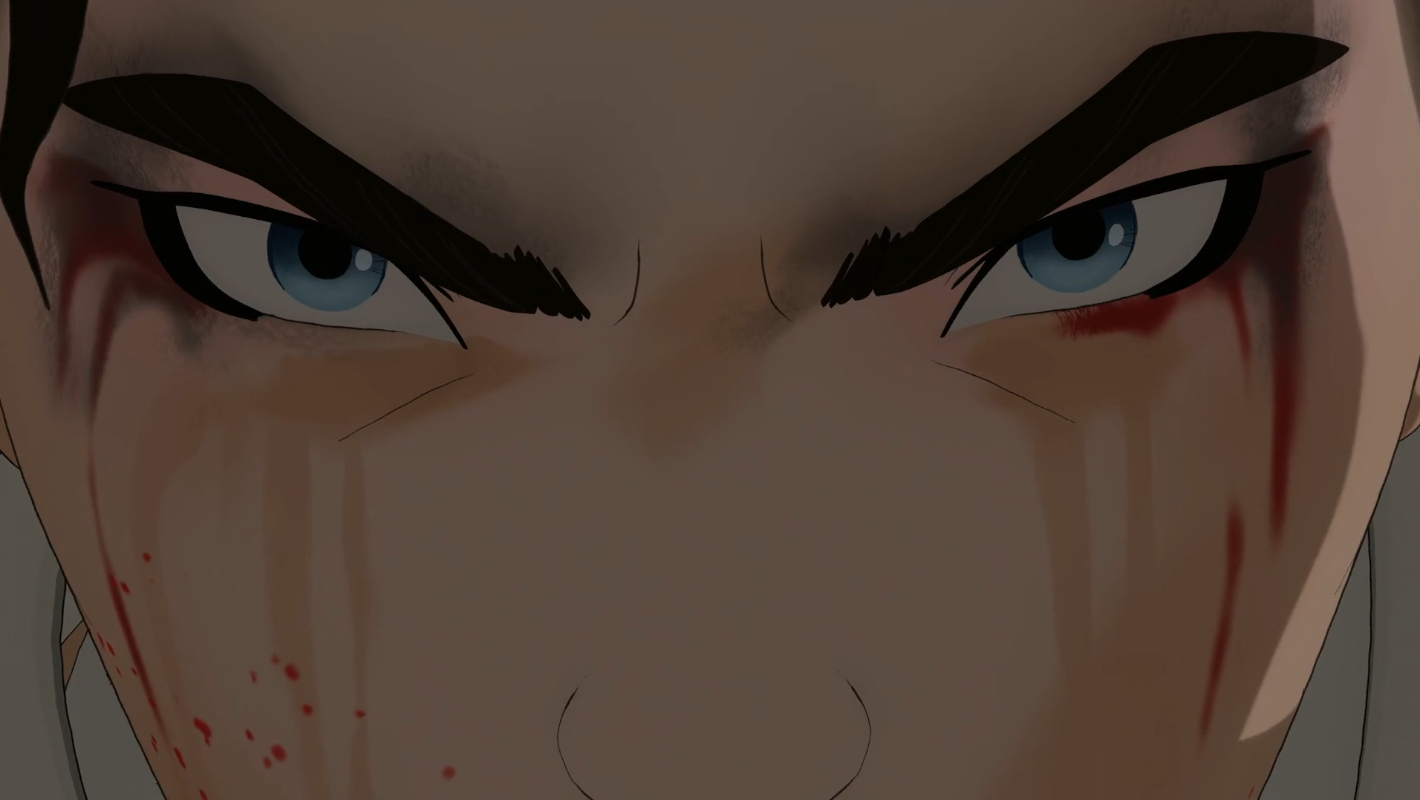
There are also some very cool animation sequences, particularly the fights, which I will not to spoil here.
Themes ¶
I love analyzing the themes of a story. What does a story mean and why was it written?
This show focuses heavily on oppression and trauma. Mizu herself has been tormented, abused, and nearly killed her whole life due to her mixed descent and her gender. She is taken advantage of and mercilessly beaten even as a ronin. In spite of that, she grows strong and defeats her oppressors.
I think the message of the story is to not let your hate and trauma make you a monster. Everyone has their own demons they fight. Life is hard for everyone, but letting your anger and past fuel your decisions will make you take actions you will regret. At multiple points in the show Mizu is compared to an Onryō, a vengeful and hateful spirit[5]. Mizu realizes that she has become a monster after almost losing her life to Fowler. We can never change our past but we can always change our future.
Cons ¶
I would be lying if I said this was a perfect show. There are a few flaws and my own opinions I would like to mention that bring down my rating (in no particular order):
- The screenwriters gave too much of Mizu's backstory in flashbacks. I wish her backstory was verbally introduced but I also acknowledge that the writers likely chose to show her backstory this way because Mizu does not speak much in the show.
- I didn't like Mizu's final decision. It almost feels like some progress of the show was lost.
- The characters are well written but sometimes the dialogue delivery feels fake and cheesy. The tone of some lines broke the immersion because I felt like the characters didn't care about the stakes of the situations they were in.
- I didn't like the ending of Taigen's story. He initially pushed hard to have an honorable duel with Mizu, but the thought of a duel faded away after a while. He never apologized or called off the duel either.
Bonus: Memes ¶
What's the point of experiencing art without being able to enjoy it with some friends? Here are some Blue Eye Samurai memes.

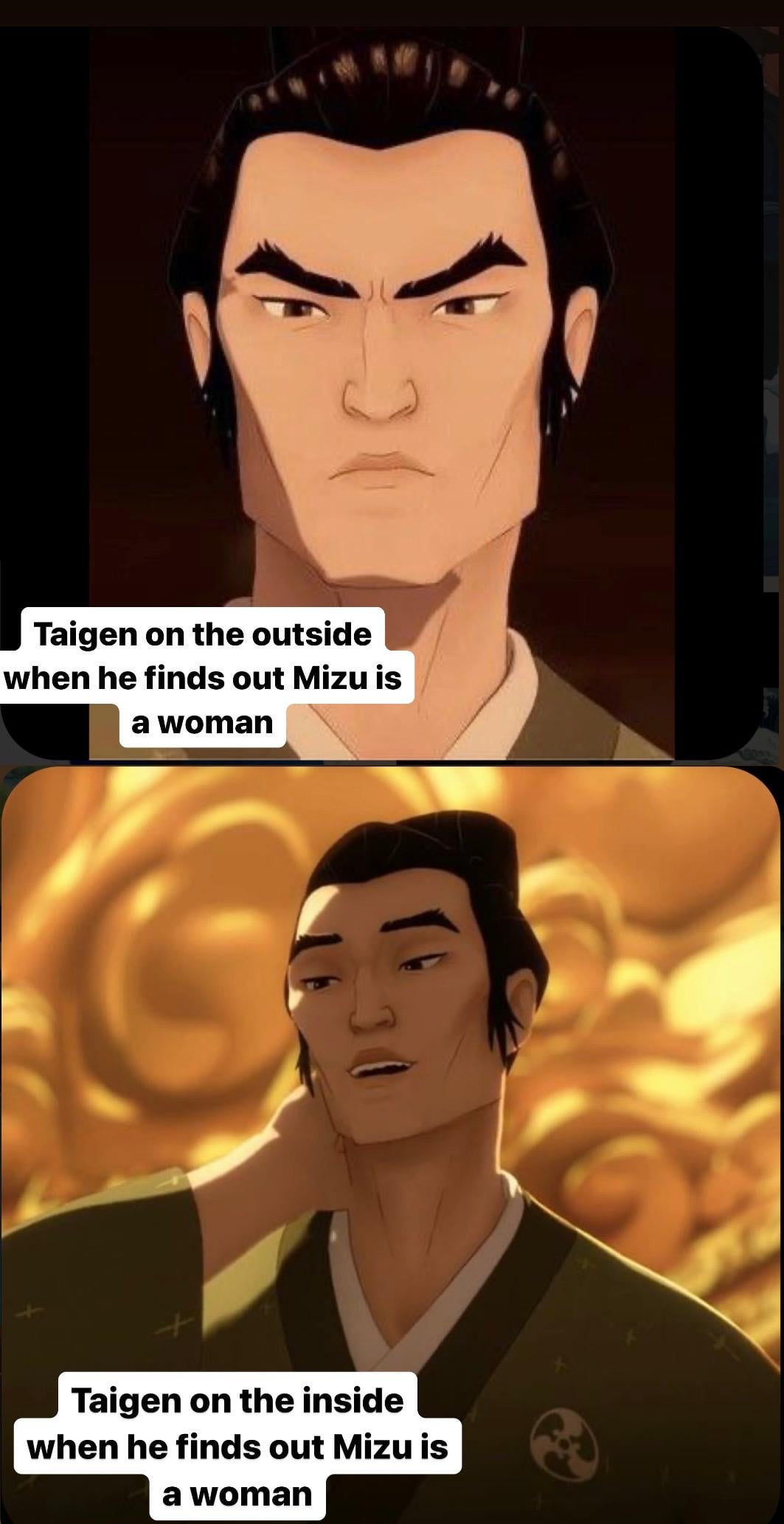
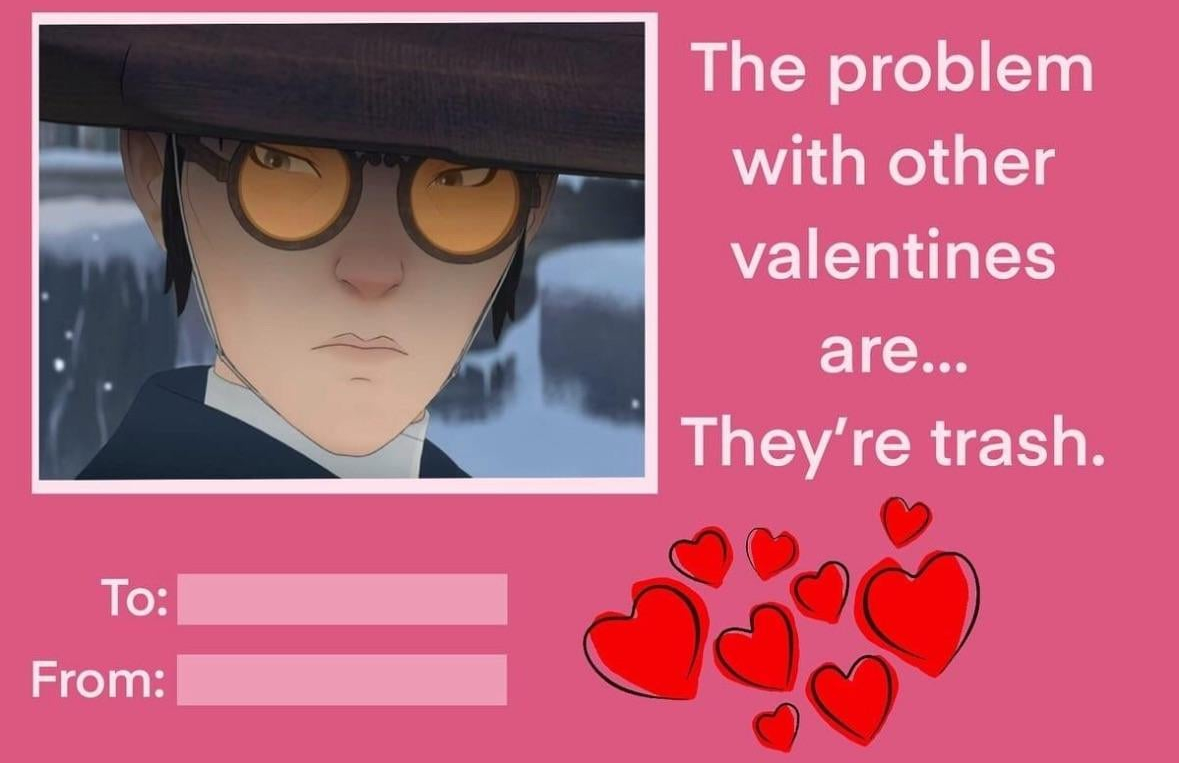
I watched Blue Eye Samurai during Valentine's Day. Sorry I didn't post this Valentine earlier!
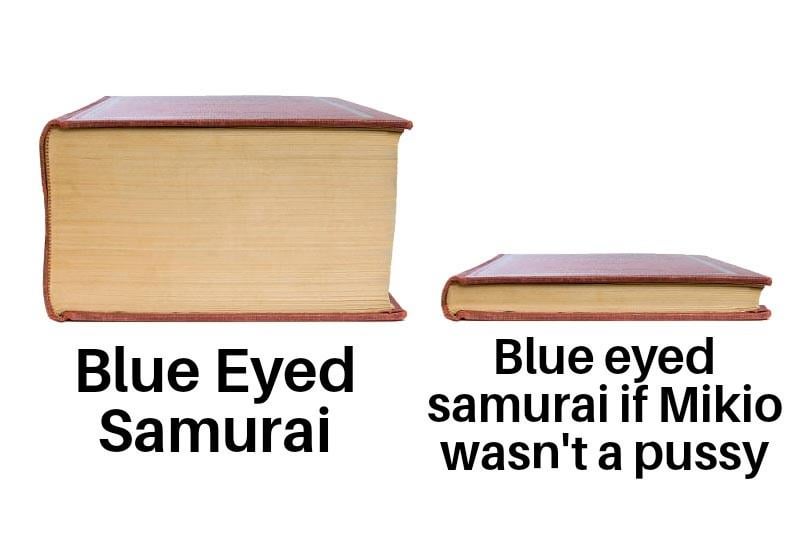
Conclusion ¶
I give Blue Eye Samurai an 8.0/10 and recommend this show. If you like the atmosphere and pacing of Blue Eye Samurai, you might like John Wick (2014) or The Mandalorian (2019). If you like the animation, you might like Arcane (2021) or Spider-Man: Into the Spider-Verse (2019).
This review was written for season 1 of Blue Eye Samurai. Since its release Netflix has renewed the show and the creators have stated their intent to make two to three additional seasons. ↩︎
Bonus points: almost all of the voice actors are of Japanese descent or mixed descent. Extra bonus points: George Takei voices Seki. ↩︎
Mizu has plenty of plot armor, of course, but it is fairly believable plot armor. ↩︎
https://www.netflix.com/tudum/articles/blue-eye-samurai-soundtrack-list ↩︎
The origins of the Onryō might be sexist. It sounds like men thought the idea of a "vengeful woman spirit" would be scary. ↩︎